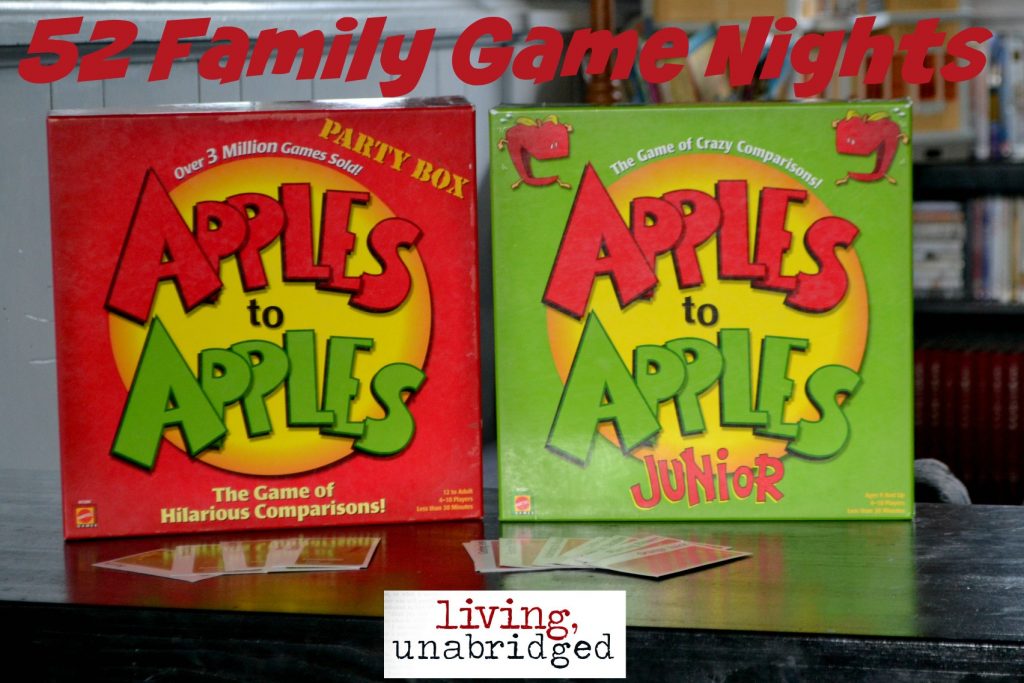We're going to wrap up our "Party Game" month with a now familiar favorite.
 Family Game Night #16: Apples to Apples
Family Game Night #16: Apples to Apples
Philip's take on Apples to Apples:
It is sometimes easy to overlook a game because it has so revolutionized the industry that it now seems commonplace. When Apples to Apples entered the market in 1999, it changed the face of party games from that moment on. Since that time many clones and copycats have relied on this game’s basic formula. Despite this, Apples to Apples continues to shine.
In Apples to Apples, players try to match a red noun (or occasionally a verb phrase) from their hand of cards with a green adjective or adverb card. The green card might be something like “Nasty”. You might choose “Mud” from your hand while an opponent might choose “Worm”. The players each secretly add their chosen card to the pile of answers. One player will serve as judge, deciding which card makes the best match. The winner of the round takes the green card and the next player in line is the new judge. Play continues until one player has enough green cards to win (different depending on the number of players).
That’s really all there is to it.
And yet, the game is delightful. It takes about 30-45 minutes, working with as few as three players and as many as twenty or more. I’ve had success playing the game at parties, camp, and even banquets, as well as around the kitchen table with the kids. It can be played by individuals or as a number of teams.
Apples to Apples does require a bit of reading, so players who want to participate as individuals must be able to read. Additionally, the original version of the game includes quite a few celebrities and historical events that might not be familiar to younger players. Thankfully, there is a Junior version that avoids these more challenging cards.
While most groups will have a fun and hilarious time, there are a few pitfalls for more serious gamers. The judge may pick any card and does not have to pick the “best” answer. While it is important to know your audience and factor the judge’s quirks into your decision, sometimes it’s more about being lucky than accurate.
Also, the limited number of cards in your hand means that you will often not have any cards that fit especially well with a given green card. I prefer to play with a few more cards in hand; however, this does not work well for younger players. Another variant rule we enjoy is to add a mystery card from the top of the deck to the pile or answers, especially with fewer players.
Overall, Apples to Apples is a great party game. The fact that others have copied it so often speaks to its influence and popularity. It takes almost no time or effort to learn and can lead to truly funny and memorable gaming moments. You can play it anywhere and with anyone. You and your family will love it!
This family favorite now has several expansion packs, so if you've grown tired of the same cards over and over, pick up an expansion and revitalize the game. Another variation is to reverse play: have the players choose a red card (noun) to suit the green card (adjective or adverb). The game includes some blank cards too, so you can personalize with personal names or places - guaranteed to add some hilarity to a round.
Summary of Apples to Apples:
Number of Players: 3+ (we've played with groups up to 20-ish)
Recommended Ages: 12+ for the original, 9+ for Junior. I feel these "Recommended ages" are frankly, ridiculous. If a child can read, they can play.
Reading Required: Yes.



